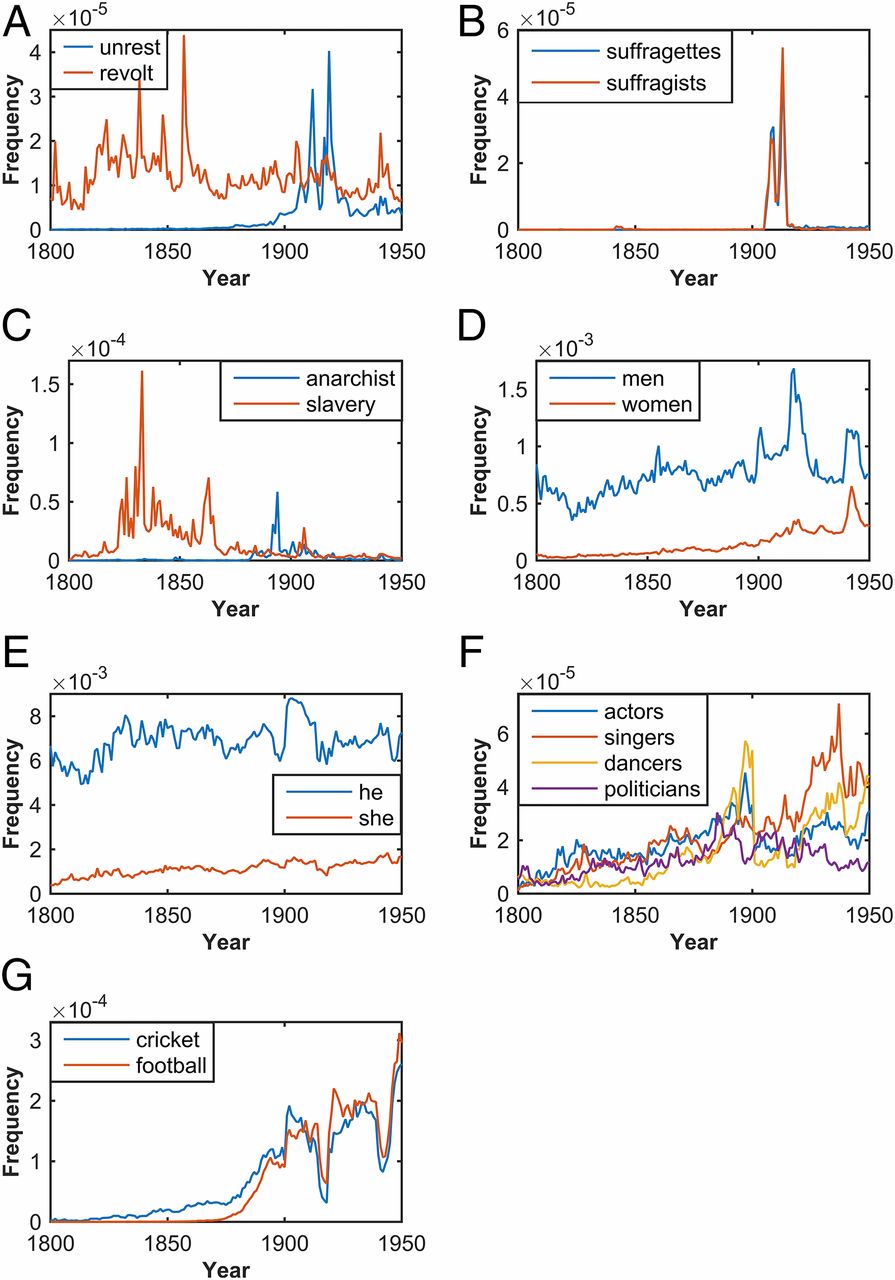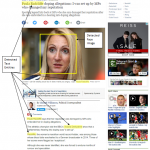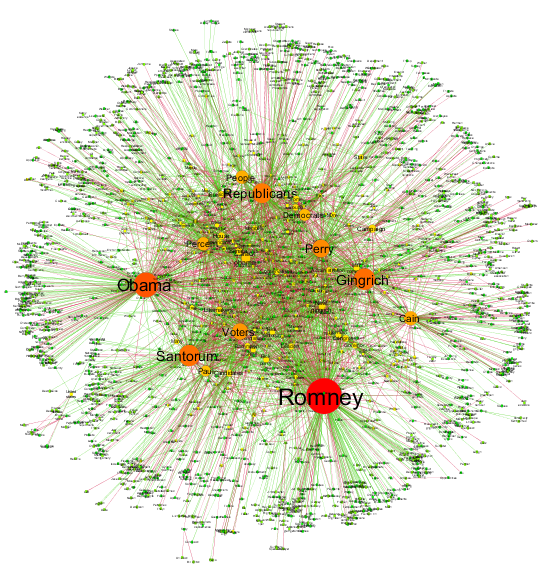Content Analysis of 150 Years of British Periodicals
 Previous studies have shown that it is possible to detect macroscopic patterns of cultural change over periods of centuries by analyzing large textual time series, specifically digitized books. This method promises to empower scholars with a quantitative and data-driven tool to study culture and society, but its power has been limited by the use of data from books and simple analytics based essentially on word counts. This study addresses these problems by assembling a vast corpus of regional newspapers from the United Kingdom, incorporating very fine-grained geographical and temporal information that is not available for books. The corpus spans 150 years and is formed by millions of articles, representing 14% of all British regional outlets of the period. Simple content analysis of this corpus allowed us to detect specific events, like wars, epidemics, coronations, or conclaves, with high accuracy, whereas the use of more refined techniques from artificial intelligence enabled us to move beyond counting words by detecting references to named entities. These techniques allowed us to observe both a systematic underrepresentation and a steady increase of women in the news during the 20th century and the change of geographic focus for various concepts. We also estimate the dates when electricity overtook steam and trains overtook horses as a means of transportation, both around the year 1900, along with observing other cultural transitions. We believe that these data-driven approaches can complement the traditional method of close reading in detecting trends of continuity and change in historical corpora.
Previous studies have shown that it is possible to detect macroscopic patterns of cultural change over periods of centuries by analyzing large textual time series, specifically digitized books. This method promises to empower scholars with a quantitative and data-driven tool to study culture and society, but its power has been limited by the use of data from books and simple analytics based essentially on word counts. This study addresses these problems by assembling a vast corpus of regional newspapers from the United Kingdom, incorporating very fine-grained geographical and temporal information that is not available for books. The corpus spans 150 years and is formed by millions of articles, representing 14% of all British regional outlets of the period. Simple content analysis of this corpus allowed us to detect specific events, like wars, epidemics, coronations, or conclaves, with high accuracy, whereas the use of more refined techniques from artificial intelligence enabled us to move beyond counting words by detecting references to named entities. These techniques allowed us to observe both a systematic underrepresentation and a steady increase of women in the news during the 20th century and the change of geographic focus for various concepts. We also estimate the dates when electricity overtook steam and trains overtook horses as a means of transportation, both around the year 1900, along with observing other cultural transitions. We believe that these data-driven approaches can complement the traditional method of close reading in detecting trends of continuity and change in historical corpora.
Discovering Periodic Patterns in Historical News
 We address the problem of observing periodic changes in the behaviour of a large population, by analysing the daily contents of newspapers published in the United States and United Kingdom from 1836 to 1922. This is done by analysing the daily time series of the relative frequency of the 25K most frequent words for each country, resulting in the study of 50K time series for 31,755 days. Behaviours that are found to be strongly periodic include seasonal activities, such as hunting and harvesting. A strong connection with natural cycles is found, with a pronounced presence of fruits, vegetables, flowers and game. Periodicities dictated by religious or civil calendars are also detected and show a different wave-form than those provoked by weather. States that can be revealed include the presence of infectious disease, with clear annual peaks for fever, pneumonia and diarrhoea. Overall, 2% of the words are found to be strongly periodic, and the period most frequently found is 365 days. Comparisons between UK and US, and between modern and historical news, reveal how the fundamental cycles of life are shaped by the seasons, but also how this effect has been reduced in modern times.
We address the problem of observing periodic changes in the behaviour of a large population, by analysing the daily contents of newspapers published in the United States and United Kingdom from 1836 to 1922. This is done by analysing the daily time series of the relative frequency of the 25K most frequent words for each country, resulting in the study of 50K time series for 31,755 days. Behaviours that are found to be strongly periodic include seasonal activities, such as hunting and harvesting. A strong connection with natural cycles is found, with a pronounced presence of fruits, vegetables, flowers and game. Periodicities dictated by religious or civil calendars are also detected and show a different wave-form than those provoked by weather. States that can be revealed include the presence of infectious disease, with clear annual peaks for fever, pneumonia and diarrhoea. Overall, 2% of the words are found to be strongly periodic, and the period most frequently found is 365 days. Comparisons between UK and US, and between modern and historical news, reveal how the fundamental cycles of life are shaped by the seasons, but also how this effect has been reduced in modern times.
Public Mood in UK Twitter during the Brexit Referendum
 We study the changes in public mood within the contents of Twitter in the UK, in the days before and after the Brexit referendum. We measure the levels of anxiety, anger, sadness, negative affect and positive affect in various geographic regions of the UK, at hourly intervals. We analyse these affect time series’ by looking for change-points common to all five components, locating points of simultaneous change in the multivariate series using the fast group LARS algorithm, originally developed for bioinformatics applications. We find that there are three key times in the period leading up to and including the EU referendum. In each case, we find that the public mood is characterised by an increase in negative affect, anger, anxiety and sadness, with a corresponding drop in positive affect. The hour by hour evolution of public mood in the hours leading up to and following the closure of the polls is further analysed in conjunction with the GBP/EUR exchange rate, finding four change-points in the hours following the vote, and significant correlation between the exchange rate and the affect components tested.
We study the changes in public mood within the contents of Twitter in the UK, in the days before and after the Brexit referendum. We measure the levels of anxiety, anger, sadness, negative affect and positive affect in various geographic regions of the UK, at hourly intervals. We analyse these affect time series’ by looking for change-points common to all five components, locating points of simultaneous change in the multivariate series using the fast group LARS algorithm, originally developed for bioinformatics applications. We find that there are three key times in the period leading up to and including the EU referendum. In each case, we find that the public mood is characterised by an increase in negative affect, anger, anxiety and sadness, with a corresponding drop in positive affect. The hour by hour evolution of public mood in the hours leading up to and following the closure of the polls is further analysed in conjunction with the GBP/EUR exchange rate, finding four change-points in the hours following the vote, and significant correlation between the exchange rate and the affect components tested.
Gender Representation in Online News
 It has long been argued that women are under-represented and marginalised in relation to men in the world’s news media. New research, using artificial intelligence (AI), has analysed over two million articles to find out how gender is represented in online news. The study, which is the largest undertaken to date, found men’s views and voices are represented more in online news than women’s.
It has long been argued that women are under-represented and marginalised in relation to men in the world’s news media. New research, using artificial intelligence (AI), has analysed over two million articles to find out how gender is represented in online news. The study, which is the largest undertaken to date, found men’s views and voices are represented more in online news than women’s.
What is perhaps more interesting is that the research found – while being overall under-represented – women appear proportionally more in images than men, while men are mentioned more in text than women. A breakdown of topics shows that women feature more in articles about fashion, followed by entertainment and art, while being least present in topics including sport and politics.
Automated analysis of the US presidential elections using Big Data and network analysis
 The automated parsing of 130,213 news articles about the 2012 US presidential elections produces a network formed by the key political actors and issues, which were linked by relations of support and opposition. The nodes are formed by noun phrases and links by verbs, directly expressing the action of one node upon the other. This network is studied by applying insights from several theories and techniques, and by combining existing tools in an innovative way. The analysis yields various patterns.
The automated parsing of 130,213 news articles about the 2012 US presidential elections produces a network formed by the key political actors and issues, which were linked by relations of support and opposition. The nodes are formed by noun phrases and links by verbs, directly expressing the action of one node upon the other. This network is studied by applying insights from several theories and techniques, and by combining existing tools in an innovative way. The analysis yields various patterns.
This is the first study in which political positions are automatically extracted and derived from a very large corpus of online news, generating a network that goes well beyond traditional word-association networks by means of richer linguistic analysis of texts.
Coverage of Science in the Media
 The portrayal of scientific and technological objects in the mass media plays a fundamental role in our understanding of how such issues are discussed and interpreted in the public sphere and constitute common sense knowledge. There is a wide scientific literature on this topic that combines communication theories and studies of mass media influences with public understanding of science research.
The portrayal of scientific and technological objects in the mass media plays a fundamental role in our understanding of how such issues are discussed and interpreted in the public sphere and constitute common sense knowledge. There is a wide scientific literature on this topic that combines communication theories and studies of mass media influences with public understanding of science research.
In this context, we analysed the impact of a major event, the disaster at the nuclear power plant in Fukushima Daiichi (Japan, 11th March 2011), on media representations of nuclear power before and after the event.
